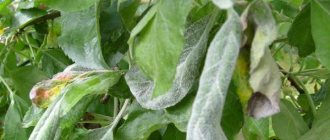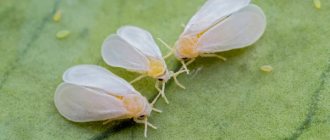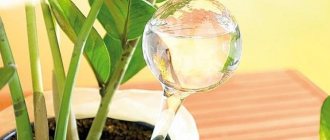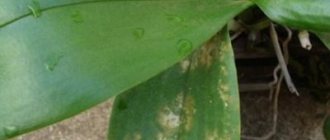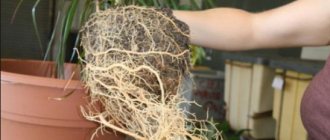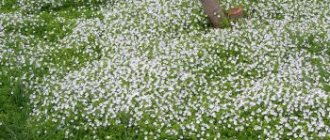Pests of indoor plants
Mostly, flower growers are bothered by the following types of parasites.
White bugs in the ground
White bugs that live in the soil are called white bugs. This insect can jump. The parasite has an elongated body on which sparse hairs grow, and there are antennae on the head.
There are hundreds of pests of indoor plants, and each has its own remedy.
They usually appear in soil layers rich in humus. White podura feeds on plant debris, but the living root system also suffers from it. Damaged roots cannot cope with their function, as a result the flower stops developing and may die.
If small white bugs appear in indoor flowers in the ground, then you need to:
- reduce watering, as bugs do not reproduce well in dry soil;
- be sure to provide good drainage in the pot to prevent mold and souring of the soil;
- dilute the soil with sand.
For your information! You can take a potato tuber, cut it in half and place it on the surface of the soil. After 2 hours, the vegetable will be covered with parasites and can be thrown away.
Among the chemical preparations you can use pochin, aktar, bazudine.
Black bugs on indoor plants
Black bugs that appear on indoor flowers are sciarids, or fungus gnats (black fly). This is a two-winged insect measuring up to 7 mm. She has an elongated dark body and black wings, but some females do not have wings. The adult black fly has long legs and whiskers.
Particularly dangerous for indoor plants are the larvae of the parasite, which feed on decaying tissues in the soil and damage the roots of flowers.
To get rid of pests, it is recommended to treat the soil with a slightly pink solution of potassium permanganate. You can chop dill and sprinkle it on the top layer of soil, it will repel parasites.
Chemicals that are effective against fungus gnats include Pochin, Aktara, and Grom-2.
Aphids are an enemy for plants with soft tissues
Aphids feed on plant sap, piercing leaves and green shoots with their sharp proboscis.
Aphids can destroy a flower in a matter of days.
You can see light dots at the puncture site. The parasite itself is easy to see with the naked eye. The insect is green in color, its size reaches 2 mm. Aphids can be with or without wings. During the life of the insect, honeydew is released, which glues young leaves and buds together. Next, ants appear and feed on the honeydew.
Important! When fighting aphids, you need to take into account that the larvae live not only on the surface of the flower, but also in the soil.
The damaged plant should be washed in the shower, since aphids do not adhere well to the flower and are easily washed off with water.
The pest does not like crops that smell strongly, for example, geranium, so it is recommended to place it next to the infected specimen.
An infusion of citrus peels helps against the parasite. To prepare it, you need to add 1 liter of water to 4 tbsp. spoons of zest. Or you can use ready-made chemicals: Aktar, Confidor.
Onion root mite
Onion root mite damages the underground root system of bulbous plants. When infected, the root crops turn into dust and fall off, the plant itself stops blooming and withers.
To detect the pest, you will have to remove the flower from the pot. Therefore, it is possible to understand that a plant is infected only when it begins to wither.
Onion root mites can appear in pots that do not have drainage, if you water the flower abundantly and place it near a warm radiator. In addition, the pest often settles in old soil, which has become compacted over time and no longer allows air to pass through.
If a mite has settled on a plant, it should be kept away from healthy crops. A sick flower needs to be examined and, if the root system is severely damaged, it is better to throw it away. When the roots can be saved, they are washed with running water and placed in a solution of an insecticide, for example, Apollo, Neoron, for 12 hours. The pot also needs to be rinsed with water and disinfected.
Traditional methods, for example, nettle infusion, also help in the fight against root mites. To prepare it, 700 g of fresh herbs should be poured into 5 liters of boiling water. Pour the infusion into a sealed container, place it in a warm place for 5 days and stir periodically all this time. Then it should be filtered, diluted in a ratio of 1:10 and the plant should be watered with the solution.
Note! Instead of nettle, you can use horsetail or wormwood.
Spider mite
Spider mites are small parasites that measure up to 1 mm. Usually it is not visible to the naked eye, but you can suspect that the pest has settled on the plant by the web that appears on the leaves, shoots and other parts. You can see light puncture spots on the leaves, which also indicate insect infestation. Although the pest is small in size, it is very dangerous, as it quickly spreads on the bush and causes its death.
After infection, the leaves and shoots quickly become covered with a sticky web, and the mite begins to suck out all the nutrients, causing the leaves to turn yellow and wither. The plant becomes unstable to fungal infection and dies after a while. If a spider mite gets on a flower once, it is almost impossible to get rid of it, since part of its population remains in the ground. As soon as the plant weakens, the pest will begin to multiply on it.
For your information! The insect can settle on any home flower, but ficus, roses and citrus fruits are especially sensitive to it.
To cope with it and save the plant, you need to start fighting spider mites at the first signs of infection. To get rid of the insect, you can use special chemicals, for example, Fitoverm, Apollo.
You can also use traditional methods:
- grate 20 g of laundry soap and dilute it in 1 liter of warm water. Leave the resulting liquid for a couple of hours, after this time the solution is mixed and it can be used. The soil in the pot must be covered with cellophane so that the soap solution does not get on the roots, otherwise the flower will die. You need to wet a sponge with the liquid and apply it to the entire above-ground part of the plant. The soap foam must be left on the flower for 4 hours and then washed off. The treated plant must be covered with a plastic bottle for 24 hours. This is necessary to maintain high humidity, which spider mites do not like;
- chop 20 g of garlic and pour 1 liter of water into it. The resulting solution can be sprayed on the infected plant. If an indoor flower does not tolerate spraying, then chopped garlic can be placed next to the infected plant and covered with a bag, which must be removed after a couple of hours.
Greenhouse whitefly
The orange or greenhouse whitefly is a small butterfly. The length of females reaches 1.3 mm, and males - 2.5 mm. Not only adult whiteflies are dangerous, but also their larvae.
Names of the main types of pests with photos
Pests that gardeners may find on their plants include:
- flower aphids;
- scale insect;
- spider mite;
- thrips;
- aphid;
- mealybug;
- white fools and others.
Flower aphid
Aphids pose a danger to outdoor and indoor plants. This insect enters the house in different ways: it flies from the street, moves from animal fur or from clothing. Aphids can “lurk” in a bouquet of flowers or soil that was purchased for replanting flora.
The flower parasite is difficult to notice with the naked eye. It is important to periodically inspect the plants to avoid missing the spread of aphids.
Five main signs will help you recognize the pest:
- the plant loses its fresh appearance and takes on a sickly appearance;
- the above-ground part of the bush is dotted with small punctures. The punctures act as tunnels through which aphids move around the flower;
- stems and foliage are unpleasant to the touch due to stickiness. The reason for this is the slimy substance secreted by pests. At advanced stages, the leaves turn black and fall off;
- open buds weaken and dry out. They are rapidly declining due to lack of nutrients;
- The plant is surrounded by ants. Aphids are a favorite delicacy of ants and they quickly find them in the apartment.
Reference. In those places where aphids settle, sooty fungus forms over time.
Scale insects (small light insects)
Scale insects are a frequent visitor to homes where citrus fruits, palm trees and oleanders grow. Despite its preferences, the insect is an omnivore and can be interested in any plants. Scale insects suck the juice from plants, which leads to the drying out and death of the plants.
There are four types of these insects:
- brown - affects ficus, laurels, palm trees and dracaenas;
- cactaceae - settle on cacti;
- olive - prefer oleanders, laurels, camellias, pomegranates, citruses and hibiscus;
- palmaceae - found on palm trees.
Due to their large size, female scale insects become visible even with a superficial inspection of the plants. Flowers on which these insects settle show the following symptoms:
- leaves become covered with brown-red spots. The presence of such spots indicates the location of scale insects;
- the leaves turn yellow and thin out;
- stems grow in the wrong direction;
- the plant loses buds and foliage.
Important! In the first stages of the “disease,” the plant can be helped. But when it loses all its foliage, no fertilizer or fungicide will save it.
Thrips (small black bugs)
Thrips pose a particular danger to plants. In addition to sucking juice, they carry dangerous diseases. These insects are polyphagous (or omnivorous) and can harm all types of plants. Undeveloped wings prevent thrips from flying. They move on the ground (with the exception of the bread subspecies).
There are four types of pests found indoors:
- heterovorous - live in ornamental and fruit plants. Flowers and developing ovaries are damaged;
- western floral - spread over fruit, berry and flower plants. In Russia it is found in greenhouses;
- tobacco - vegetable and flower crops grow;
- rosaceae - destroy rosaceous plants.
Due to their microscopic size and inconspicuous coloring, these insects are almost invisible. The following manifestations can indicate a flower is infested with pests:
- multiple punctures appear on the leaves;
- the leaves become discolored and become withered;
- leaves and flowers become covered with brown spots;
- the trunk and buds are deformed;
- the foliage dies and falls - if the plant is not helped in time.
Reference. Before treating a plant for thrips, it should be washed in the shower.
Mealybugs
Mealybugs are large (up to 1 centimeter) and quickly catch the eye of the gardener. They are distinguished from other insects by their light color.
A cluster of scale insects gives the impression of a white cobweb that engulfs the plant. Of all the indoor flowers, these pests choose orchids and violets. They are also attracted to exotic cacti.
During their life, mealybugs secrete honeydew. This substance serves as a favorable environment for the appearance of fungal diseases. Therefore, scale insects never come alone - they are always followed by sooty fungus. Insects harm both the root system and the above-ground parts of the plant.
Mealybugs can be recognized by simple signs:
- a waxy coating that looks like pieces of cotton wool or cobwebs;
- sticky leaves (due to honeydew or honeydew);
- wilting of the plant.
Reference. Simply wiping the leaves will help prevent mealybugs.
White fools and others
Podurs share a pot with all indoor plants. They live and reproduce in the soil. A moderate amount of these inhabitants does not threaten the well-being of flowers. If the fools begin to actively reproduce, then the grower will have problems. The main factor that causes an increase in the number of insects is watering. Excess humidity is a favorable environment for pests.
For this reason, fools “love” plants that constantly require an influx of moisture. Since it is impossible to reduce watering of such varieties, you should look for another solution. Flower growers use insecticides or folk remedies, depending on the approach.
Podurs are not capable of destroying a plant alone. They can weaken his immunity. As a result of this damage, the flower will become susceptible to rot and infectious diseases. The negative effect will increase if the plant is in a room with low temperature.
Reference. Violets and orchids tolerate the invasion of white fools the worst.
Diseases of indoor flowers
Diseases of indoor plants are associated with improper care.
White coating on the ground in pots
A white coating on the soil in potted indoor plants can be caused by watering with hard water. To soften the water, you can boil or freeze it and then water the flowers.
When the white coating is soft to the touch, it is mold. To get rid of it, you need to reduce watering and remove the layer of soil covered with mold. The soil must be treated with antifungal agents. To treat fungus, you can use drugs such as Topsin M, Sarfun 500 SC.
The appearance of a white coating resembling cotton wool on plants is associated with mealybugs. Parasites can reach a length of 1 cm. The insect settles on the inside of the leaf and feeds on the sap of the plant. When indoor flowers have a white coating like cotton wool, what to treat, you need to ask first, otherwise the plant may die in a matter of days. To save an infected crop, you can use the means admiral, commander, and tanrek.
Why does soil in pots become moldy?
There are several reasons why the soil in a pot becomes moldy. Mold can be associated with excessive watering and frequent spraying. To prevent it from appearing, you need to water the plant when the top layer of soil dries 2 cm. You also need to make drainage in the pot.
Note! The soil may begin to turn white due to a large amount of fertilizer.
Sooty fungus on indoor plants
Sooty fungus, or black fungus, is an infectious disease. A plaque forms on the plant, which clogs the stomata on the leaves, as a result of which photosynthesis is disrupted, the flower lags behind in development and weakens.
Sooty fungus disrupts photosynthesis
To prevent the development of infection, you need to promptly spray the plants against parasites that form sweet secretions. These are insects such as aphids, thrips, and scale insects.
The infected plant should be wiped with soapy water and then rinsed with warm water. After this, to cure the flower, you need to treat it with phytosporin.
You need to get rid of pests of indoor flowers as quickly as possible, otherwise the affected plant may die before your eyes. In addition, insects, having destroyed one flower, quickly switch to another. Therefore, in order to preserve your home collection, it is worth carefully inspecting each specimen and taking timely measures to combat unexpected guests.
Scale insects - pests of indoor flowers: photo, description, control methods
Scale insects, as parasites of indoor plants, belong to a separate superfamily of insects. I will look at three of their most common representatives - mealybugs, scale insects and false scale insects. All of them are sucking insect pests of plants, which are classified as members of the Hemiptera family.
Mealybugs are small white bugs found in indoor plants. Their colonies resemble lumps of cotton wool in the axils of the leaves, and in advanced cases - on the trunks. They are round, 3–5 mm, and release an orange liquid when crushed. These pests are considered to be quite mobile.
Their relatives, plant parasites, scale insects and pseudoscale insects, measuring 2–5 mm, feed on sap from plant cells. Their color is brown, and the liquid inside is yellowish and thick. Often the consequence of their vital activity is discoloration of the leaf.
What are these house plant pests afraid of? Since they are covered with special shields on top, ordinary insecticides do not attack them. The most useful will be the use of intestinal drugs. I advise you to consider such alternative options as:
- alcohol treatment (wet a cotton swab or swab with alcohol, wipe the leaves and branches; repeat when parasites reappear);
- water-oil emulsion (a glass of water, a spoon of soap and a couple of spoons of sunflower oil);
- replacement of the top layer of soil.
Margarita Yakusheva in her book “Indoor Plants” claims that pests of indoor plants will not survive washing the plant with cool water and various infusions (for example, tobacco and soap, where you take a tablespoon of tobacco and a couple of grams of soap per half liter of water).
Photo: wikimedia.org: UGC
Pests of indoor plants with photos and names
All plants, no matter where they are grown, are subject to invasion by various pests. In addition, indoor plants that housewives love to grow are susceptible to various diseases and the harmful effects of various insects. Various reasons contribute to this. Often housewives themselves are to blame for this, since they do not create the proper conditions for growth and development for plants. Some of them simply forget to water the plants, and some of them water them excessively. It should be noted that there are quite dangerous pests that can reduce a person’s work to zero.
Measures to prevent the appearance of insects on indoor plants
Preventing diseases is the surest way to combat them. There are a few simple rules that will help reduce the risk of pests to zero. Disinfected soil is considered the key to a healthy flower.
Soil treatment against larvae
Soil disinfectants can be purchased at every flower shop. It is important to understand that they are toxic. Products should be used carefully and only after reading the instructions.
Popular drugs include:
- copper sulfate. The product cleanses the soil and enriches it with copper, which strengthens the plant. One spoon of vitriol dissolves in 10 liters of liquid. The soil is saturated with the solution twice a year - in autumn and spring;
- phytosporin. The drug was created based on the bacterium Bscillus Subtilis. This bacterium destroys microbes and nematode larvae. The soil should be treated with phytosporin every 3-4 months, since the bacterium is short-lived;
- Actara. The product is used before planting seeds or transplanting adult plants. Before digging, the soil must be loosened and moistened. Then the dry preparation is mixed with the soil.
Important! After disinfecting the soil, it is important to stabilize its acidity level. This can be done using dolomite flour, ash or chalk.
Whitefly
This is an insect with a body length of no more than 2 mm. A characteristic feature is white wings and a yellowish body. They can be found:
- On the back side of the leaves, where they are located in colonies.
- According to characteristic sweetish traces, on which after some time a sooty fungus appears.
Whitefly larvae have a sucking type of mouthparts, so they suck out the juices from the plant. As a result, the plant loses its vitality and gradually loses its attractiveness. If no measures are taken, the plant will soon die.
Interesting fact! When appearing in greenhouses, the whitefly prefers plants such as hibiscus, pelargonium or begonia. After the appearance of just one individual, after a short period of time a whole colony of these insatiable pests appears in the greenhouse. In this regard, the fight should begin immediately.
These are also harmful insects that suck juices from plants due to the presence of piercing-sucking mouthparts. Insects have an ovoid body shape, no more than 2 mm in length. Aphids have rather long legs, but they move rather slowly. The color of insects depends on the species, as well as on living conditions, so it can be varied.
There are both winged and wingless types of insects. Naturally, insects with wings can easily enter a person’s home, even through an open window.
Signs of aphid damage to plants
The infestation of plants by aphids occurs very quickly, since insects reproduce at high speed. Typically, aphids colonize the tops of stems and attack young leaves, leaving older stems and leaves untouched. Gluttonous insects require constant nutrition, so in a short time they damage the stem system of the plant very significantly. Insects suck out the nutritious juices from the greens, and in return inject toxic substances
It is almost impossible to detect aphids at the initial stage, unless you arrange a periodic comprehensive check of indoor plants. Insects are located on the back side of the leaves, however, their rapid reproduction causes new individuals to be distributed over the surface of the entire plant, and then they can already be seen with the naked eye.
A characteristic feature of aphid infestation is the presence of sticky traces that these green bugs leave during their life processes. This fact contributes to the spread of harmful viruses and fungal diseases, since sooty fungi reproduce well in the sugary environment of the sticky mass.
A pest as small as the flea beetle can cause serious damage to plants.
Hairy aphid
This type of aphid is also called mealybugs. They are one of the most dangerous insects for plants. As a rule, they can be found on the underside of leaves. Their presence is indicated by a cobweb-like white coating, as well as the presence of a sticky liquid.
These insects are distinguished by a high degree of fertility. Female mealybugs lay eggs in miniature formations that resemble balls of cotton wool. After a certain time, fairly mobile larvae emerge from these lumps, which are then distributed throughout the plant. Fighting them requires an instant reaction. The sooner you start fighting this pest, the greater the chance of saving the plant.
Possible causes of plant infection
There are several houseplant pests that appear suddenly and there is often no clear reason why their green pets begin to wilt. Here's where harmful insects can come from:
- in the warm season, plants were moved from indoors to open space: to the street, veranda or taken to the balcony;
- left near an open window through which pests could enter;
- we bought a new plant and put it together with others, but it turned out to be infested with pests;
- transplanted into fresh soil without first treating it;
- errors in care: waterlogging or drying out of the soil, lack of lighting, as a result of which the diseased plant’s resistance decreases, and pests take advantage of this.
It is impossible to foresee all the causes, so it is important to notice the problem in a timely manner and try to begin pest control as early as possible. Regular examination of green pets will help with this.
Root mealybug
This type of pest poses the main threat to the root system of plants. The parasite can be detected either in the ground or on the lower part of the plant stems, by a whitish coating. Females reach a length of up to 2.5 mm, while they are larger than males and much more mobile. Pests are distinguished by their almost cylindrical body shape, covered with a waxy coating. Females lay eggs in special chambers formed by special secretions.
Males are more like whiteflies. As adults, they quickly die because they stop feeding. Therefore, females make up the main population of these pest colonies.
It is important to know! The presence of such insects on indoor plants leads to the fact that the plants lose their attractive appearance. In addition, damaged plants begin to suffer from fungal diseases.
Shchitovka
Scale insects also appear on house plants, and each type of scale insect can infect a specific type of plant. The palm scale insect parasitizes the shoots of palm trees. There are also cactus, pink, ivy, Californian, laurel, and oleander scale insects. Often scale insects appear on lemons or orchids. A characteristic feature of these pests is the shell that protects their body. In this regard, it is quite difficult to fight scale insects.
The false scale insect, which does not have a waxy shell, poses a huge danger to plants. The females of these pests grow up to 5 mm in length, and they have neither legs nor wings, unlike males. Females are distinguished by the fact that their body is covered with a convex shield, which can have different shapes, both round and oval.
These parasites prefer to be found on any part of the plant, both on the stems and on the back of the leaves. There is also a hemispherical scale insect, which is slightly larger in size and volume. Plants such as ferns, asparagus and myrtle are affected by these pests. Below is the appearance of some pests of indoor plants.
White fool
White podurs are hopping insects that can be found in potted houseplants. They differ:
- An elongated body on which sparse hairs grow.
- Having 3 pairs of legs.
- Having a long mustache.
- Prefers moist conditions.
The diet of these pests includes the remains of plant components, as well as a living root system. If you do not pay attention to these parasites in time and do not destroy them, they can lead to the death of indoor plants.
Spider mite
Many indoor plant lovers are familiar with this common and quite dangerous pest. This is a tiny insect that can only be detected with a magnifying glass. Colonies of these insects are found on the underside of leaves. Spider mites prefer warm and dry air. Under such conditions, the insect reproduces at a tremendous rate.
You can determine that a plant is infected with spider mites:
- By light spots that are visible in places where pests live.
- By the presence of the finest cobwebs that cover plants.
Chinese roses, geraniums and palm trees suffer quite a lot from the invasion of spider mites, which suck the juices out of them.
Thrips
These are insects whose length does not exceed 1.5 mm. Pests can be identified by their black or dark brown body color, with the lower part of the body being a reddish-yellow hue. Like most pests, thrips hide on the underside of leaves. The female lays eggs in very small holes, which she gnaws in the leaves and also in flower buds.
It is important to know! The appearance of a silver pattern on indoor plants indicates that the plants are infected with thrips. These are traces of their life activity.
Indoor pests thrips
Thrips are tiny insects, black in color, reaching 1 mm in length. Thrips on indoor plants are quite common, they spread quite quickly, can easily jump from one plant to another, cause harm to many plants, but most often they affect fuchsia, begonia, and codiaum. More than 5,700 species of this insect are known; more than 700 species live on the European continent. The body of thrips is elongated; they feed on plant juices. Thrips cause great damage to cultivated plants. Thrips try to lead a hidden lifestyle; it can be difficult to detect the first outbreaks of this insect. Thrips move from one leaf to another, leaving behind a white or silvery coating. Thrips cause great harm not to leaves, but to flowers. Flower thrips severely affects the flowers of the plant; they become covered with a white coating, spots, become severely deformed, and eventually simply fall off. Thrips can greatly weaken a plant, its growth rate will begin to decrease, and it is possible that shoots will stop appearing. Thrips also carry various diseases that are dangerous to the plant, such as anthracnose.
Control measures
How to get rid of pests? This question haunts many indoor plant lovers. Pest control can be done in a variety of ways. For example:
- Mechanical.
- With the help of biological drugs.
- Using chemical control agents.
- Based on folk recipes.
Mechanical method
This is an environmentally friendly, simple and affordable way to combat parasites on your own. To do this, you need to take a tool, preferably disinfected, and cut off the damaged parts of the plants. It is better to treat the cut areas with activated carbon. Pests that can be seen with the naked eye can be picked out with your hands without any problems, unless there are so many plants and pests.
Ways to fight
There are many methods and means for eliminating pests on indoor flowers; which one is suitable and effective depends on the conditions of detention and the correct treatment of the plants.
- A sick plant with signs of emerging pests must be placed in a quarantine zone, completely excluding its proximity to any types of plants. This could be a separate window sill in another room or a bathroom.
- It is worth deciding on the type of insects or worms that have affected the indoor flower. If pests are not visible on the leaves from above, you need to inspect the axils, trunk and shoots. If the pest is not detected, but the plant is withering, its leaves have dropped, and it has not been flooded or fed with fertilizer before, then you will have to pull it out of the ground and inspect the root system.
- The choice of a drug or folk remedy that can be used to remove pests depends on the degree of damage.
- Mechanical - with minimal infestation of visible insects, which can be removed from the plant by hand, rinse the leaves with water or spray the product. These include the scale insect.
- Folk remedies for protecting plants from pests are also used with minimal damage to areas on flowers.
- In case of severe damage or a large number of pests, natural or chemical-based preparations are used.
Before choosing a drug, it is important to familiarize yourself with the hazard class of the drug and its effect.
When the plant is not significantly affected, it is better to use folk remedies or biological preparations with a low level of toxicity, only if they do not help to try with more aggressiveness.
1 – extremely dangerous;
3 – moderate toxicity;
| Non-systemic | System | Specific acaricides | Insectoacaricides |
| Fitoverm, Vertimek, Karbofos, Bankol, Malathion, Akarin, Fufanon, Actellik, Iskra-M, Inta-Vir. | Tanrek, Aktar, Konfidor, Extra. | Flumite, Envidor, Sunmite, Neoron, Oberon. | Fitoverm, Aktelik, Vertimek, Aktofit, Fly eater, Thunder. |
Protecting indoor flowers - folk remedies
Compliance with agricultural techniques for caring for flowers and preventive measures will not give insect pests a chance to destroy the plants.
- it is very important not to flood the soil and not to overdry it;
- do water treatments, spraying, showers for indoor flowers 1-2 times a month.
Folk remedies will help prevent the colonization of indoor flowers by pests, especially scale insects, aphids, thrips, and fungus gnats:
| Means | How to use and dilute? |
| Manganese (potassium permanganate, KMnO4) | Watering into the soil: 1-2 crystals of manganese per 1 liter of warm water, so that the solution becomes pale pink. Watering is carried out every 4-5 days, 2-3 times no more. Foliar treatment with the same solution is carried out daily, spraying the diseased plant for no more than 5 days in a row. Before each spraying procedure, you should irrigate the flower leaves with plain water. |
| Iodine | 1 tsp. for 10 liters of water, suitable for spraying and spilling soil once every 10 days. |
| Iodine + soda ash + laundry soap | Only for spraying against aphids, scale insects, gray rot. For 5 l. water 5 ml iodine and 1 tbsp. soda and soap. Stir thoroughly, pour into a spray bottle and spray once every 10 days. |
| Alcohol tincture of calendula | For 1 liter of water, 10 ml of tincture, a solution only for external irrigation of leaves. As a preventive measure, once every 10 days for a month. When infested with pests, apply once a day for 5-7 days. |
| Tea tree essential oil | 5 ml per 3 l. water, spray daily for 5-10 days, depending on the degree of pest infestation. |
| Tobacco dust | 100 gr. tobacco dust, pour 2.5 liters. water and add 1 tsp. liquid laundry soap. Leave for 2 days, strain and spray the plants once every 2 days, 5 procedures. |
| Onion scale | Pour 1 cup of onion scales into 2 liters of hot water, leave for 24 hours, strain, add 1 tsp. soap Irrigate the leaves 1 r per day for 3-7 days. |
| Laundry soap | Mix 2 tablespoons of liquid laundry soap in 1 liter. Spray the diseased plant with water and leave for a day. The next day, rinse off in the shower and spray with the solution again, repeating the procedure for 3 days. |
Even more information about pests on indoor flowers is in the video:
Black bugs on flowers - who are they and why are they dangerous?
The fungus gnat is a sciarid (flower midge, soil gnat, detritus gnat), dipterous insects up to 7 mm in length, an elongated dark body and almost black wings, with long antennae and legs. Some females lack wings.
For indoor flowers, the most dangerous are the larvae of fungus gnats, which in the soil feed on the remains of decaying tissues and eat up the roots of plants.
Scale insects are arthropods, hemipteran insects, with strong differences between males and females. Young females have a soft, waxy shield of almost white color; males are very small, almost invisible, and die after fertilization. In adult females, the scutellum becomes more rigid and dark brown in color, hardening on the leaves of plants.
The scale insect causes significant harm by sucking out the sap of the plant; sticky marks and yellowing appear at the site of the sucker. It is especially dangerous for citrus crops, where it damages the ovary.
Thrips (blue-legged) are small, up to 1.5 mm, black insects with an elongated body and wings.
They are dangerous for all plants, as they suck out the juice, after which the leaves of the flower fall off. Thanks to their wings and long, fast legs, they move among all flowers and lay many larvae.
Every person who grows indoor plants can encounter other pests:
- aphid;
- enchytraea - white annelids;
- whitefly;
- spider, flat-bodied, cyclomene or root mites;
- mealy or root bug;
- nematodes;
- idiots.
Where do black bugs come from on potted flowers?
Black bugs can appear on indoor flowers at any time of the year and multiply quickly, because a warm room contributes to this.
Where do they come from:
- brought in from an open window with air and wind;
- along with flowers purchased in stores;
- when purchasing soil for plants;
- from a personal plot, soil taken from it;
- with bouquets of flowers purchased in flower shops or brought from the fields.
- with shoes and clothes, especially if you went on picnics.
Symptoms to recognize harmful insects
What needs to be done to save pets? First of all, find out what harmful insects have infested the flowers. To do this, a thorough examination of the plant itself and the soil is carried out. After this, they begin a merciless fight using various methods. Remember, any delay is fraught with disastrous consequences.
Insects live in the soil (on roots), on leaves, stems, and gnaw buds.
Pests of indoor plants
| in the soil (in the ground) | on the green parts of the flower |
| root mealybug | mealybug |
| enchytrea | whitefly |
| root-knot nematodes (larvae) | spider and clover mite |
| fungus gnats | scale insect |
| white idiot | aphid |
| cyclamen mite |
Plants react to each pest in a special way: they can change the color of leaves and slow down their growth. When visually examining a houseplant, you can notice changes in the leaves and stems.
Appearance of white spots
White spots are a signal of the appearance of:
- Mealybug or rootbug. You need to examine all parts of the flower. If you notice “cotton” lumps, it means there is a pest.
- When whiteflies appear, the leaves become sticky and may fall off.
- The presence of a red spider (clover) mite can be determined by the whitish mesh, spider mite by the cobweb. Leaves with a large number of insects die off.
What do yellow spots signal?
If yellow spots appear on the leaves, you need to inspect the leaves. If fingers stick to them, these are marks left by scale insects. The cause may be the appearance of enchytraea. Tiny white worms live in the soil right at the root.
Brown spots
The presence of brown, brownish spots on the bottom of the leaf and white streaks on top indicates the action of thrips.
Deformation of green parts of the plant
If the shoots and leaves on the flowers begin to deform, it means that the flower is affected by aphids or cyclamin mites. Aphids leave behind sticky residues. It sucks the juice from indoor plants, which can cause them to dry out. If dust appears on the leaves below, they curl—the mite is in control.
Withering
The cause of drooping leaves and shoots is fungus gnats, leaf or root-knot nematodes.
Prevention measures
It is not possible to completely protect your indoor plants; it is very important to carry out preventive measures.
- Do not over-moisten the soil;
- Do not leave food, stubs, or plant debris in pots that may begin to rot;
- It is not advisable to experiment with watering with fatty water with sugar or other ingredients that can become a breeding ground for pests;
- Steam purchased or collected soil in the oven;
- Spill the soil once every six months with a disinfectant solution of manganese;
- Once a week, thoroughly wash the trays and window sill with laundry soap without leaving even a residue. After washing, wipe the top with a pest repellent;
- Infected plants should be quarantined, the soil should be changed, and the roots should be washed with running water and a disinfectant.
